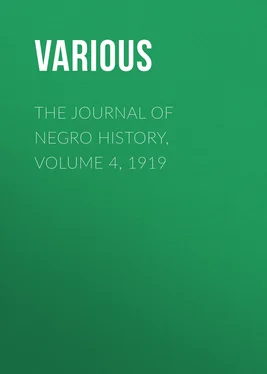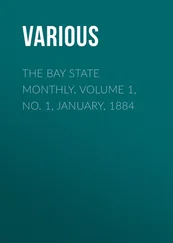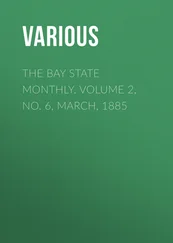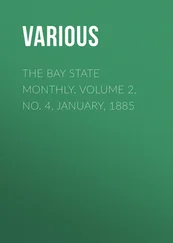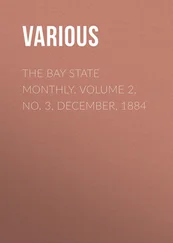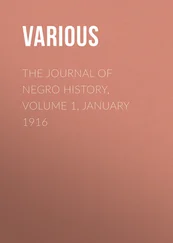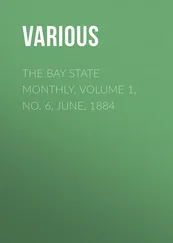Various - The Journal of Negro History, Volume 4, 1919
Здесь есть возможность читать онлайн «Various - The Journal of Negro History, Volume 4, 1919» — ознакомительный отрывок электронной книги совершенно бесплатно, а после прочтения отрывка купить полную версию. В некоторых случаях можно слушать аудио, скачать через торрент в формате fb2 и присутствует краткое содержание. Жанр: foreign_antique, periodic, История, foreign_edu, на английском языке. Описание произведения, (предисловие) а так же отзывы посетителей доступны на портале библиотеки ЛибКат.
- Название:The Journal of Negro History, Volume 4, 1919
- Автор:
- Жанр:
- Год:неизвестен
- ISBN:нет данных
- Рейтинг книги:5 / 5. Голосов: 1
-
Избранное:Добавить в избранное
- Отзывы:
-
Ваша оценка:
- 100
- 1
- 2
- 3
- 4
- 5
The Journal of Negro History, Volume 4, 1919: краткое содержание, описание и аннотация
Предлагаем к чтению аннотацию, описание, краткое содержание или предисловие (зависит от того, что написал сам автор книги «The Journal of Negro History, Volume 4, 1919»). Если вы не нашли необходимую информацию о книге — напишите в комментариях, мы постараемся отыскать её.
The Journal of Negro History, Volume 4, 1919 — читать онлайн ознакомительный отрывок
Ниже представлен текст книги, разбитый по страницам. Система сохранения места последней прочитанной страницы, позволяет с удобством читать онлайн бесплатно книгу «The Journal of Negro History, Volume 4, 1919», без необходимости каждый раз заново искать на чём Вы остановились. Поставьте закладку, и сможете в любой момент перейти на страницу, на которой закончили чтение.
Интервал:
Закладка:
Mr. Reuter's conclusions are fundamentally wrong for the two reasons that he does not know who the mulattoes are and, although taking cognizance of the fact that science has uprooted the idea of racial inferiority, he is loath to abandon the contention that the mulatto is superior to the Negro. For example, in his chapter on leading men of the Negro race, in which he specifies whether they are blacks or mulattoes, he has classified as mulattoes a large number of Negroes who have practically no evidences of white blood and are commonly referred to throughout the country as the blacks of the Negro race. The title of the book, therefore, should not be The Mulatto but The Negro . It would then establish nothing as it does. Upon the careers of these black persons he has supported his theories as to the superiority of the mulatto. This encourages him, therefore, to intimate that because of their proximity to the racial characteristics of the white race they are in some respects superior to the blacks. Here we have the return of the ante-bellum proslavery philosopher disguised as a scientific investigator.
The Anti-Slavery Movement in Kentucky. By Asa Earl Martin, Assistant Professor of American History, The Pennsylvania State College. The Standard Printing Company of Louisville, Kentucky, 1918. Pp. 165.
In this volume there is an effort to bring out something new in the history of slavery. The author is mindful of the tendency of most writers of the history of slavery to direct their attention to the radical movements associated with the names of the leading abolitionists. His effort is to treat that neglected aspect of slavery having to do with the work of the gradual emancipationists. "These men, unlike the followers of Garrison, who were restricted to the free States," said he, "were found in all parts of the Union. They embraced great numbers of leaders in politics, business and education, and while far more numerous in the free than in the slave States, they nevertheless included a large and respectable element in Maryland, Virginia, Kentucky, Tennessee and Missouri." He has in mind here, of course, the conservative slaveholders of the border States who had for a number of years felt that slavery was an economic evil of which the country should rid itself gradually by systematic efforts. Feeling that they contributed in the end a great deal to the downfall of the regime and in some respects exercised as much influence as the abolitionists, he has undertaken to set their story before the world.
The author begins with the first attack upon slavery, the early anti-slavery movement in Kentucky, the colonizationist idea, the work of the anti-slavery societies, and the efforts of the church to exterminate the evil. In the eighth and ninth chapters he treats more seriously the main question at issue, namely, exactly how men of that slave-holding commonwealth persistently endeavored to find a more rational means of escaping the baneful effects of the institution. His important contribution, therefore, is that abolition found little favor in Kentucky while gradual emancipation moved the hearts of men of both parties and even of slave-holders. How the struggle between these pro-slavery and anti-slavery parties culminated in 1849 in the defeat of the latter, is the concluding portion of the book. He shows that Kentucky exceeded most of the border slave States in permitting the freer and more extensive discussion of that question than any of the other commonwealths similarly situated.
Professor Martin's work, therefore, is a complement of Dr. I. E. McDougle's Slavery in Kentucky . Whereas Professor Martin deals primarily with the work of the gradual emancipationists, Dr. I. E. McDougle directs his attention largely to some other aspects of the question. Both of these works may be read with profit. In them the whole question has been adequately discussed and there will not soon be a need for further investigation in this field.
NOTES
Within a few years from the time the United States army will be reduced to a peace status, the Association for the Study of Negro Life and History will publish a scientific history of the Negro soldiers in the great war. As this effort will require a large outlay, it is earnestly desired that persons interested in the propagation of the truth will give this movement their support. A campaign for funds has begun and the encouragement hitherto received indicates that the amount necessary to finance this enterprise will be secured.
At present it is impossible to indicate exactly the extent of this work. It will be first necessary to make an extensive research into all of the sources of information as to the Negroes' participation in the war and when the data thus collected will have been properly digested, a more detailed description of the work may be forecasted. It is safe to say, however, that the work will consist of several volumes written by the Director of Research.
This same interest is set forth, as follows, in an item appearing in the December number of the Crisis :
"The National Association for the Advancement of Colored People has appropriated funds and commissioned the Director of Publications and Research to collect the data and compile a history of the Negro in the Great War.
"Dr. DuBois has invited a number of Negro scholars, soldiers and officials to form an Editorial Board, which will be able to issue an authentic, scientific and definitive history of our part in this war.
"The personnel of this board will be announced later. Meantime, we want the active coöperation of every person who can and will help. We want facts, letters and documents, narratives and clippings. Let us all unite to make the record complete. Correspondence may be directed to this office."
The following important announcement appeared in the December number of the Crisis :
The husband of Pocahontas wrote in 1619: " About the last of August came a Dutch man of warre that sold us twenty Negars ." From this beginning sprang the present twelve million Americans of Negro descent.
Next August will mark the Three Hundredth Anniversary of this vast transplantation of a race, which ranks easily as one of the most significant movements of mankind. Such an event can hardly be "celebrated," for it connoted too much of misery and human sorrow. On the other hand, it is too stern and meaningful a happening to be forgotten. For this reason, a group of thirty-three colored men met in New York, October 19, 1918, at the invitation of a committee appointed by the National Association for the Advancement of Colored People.
They determined to inaugurate "A Solemn Memorial of the Tercentenary of the Transplanting of the Negro race to the United States." In order, however, to give all sections and interests of the Negro race adequate voice and representation in these plans, this committee set about choosing a Committee of "Three Hundred and More," in whose hands the Memorial will take final shape. This Committee is now being chosen and will meet in New York early in January, 1919.
The Linchoten Vereeniging has published for Mr. E. C. Godee Mossbergen two volumes of Reizen in Zuid-Afrika in de Hollandse Tijd .
From the press of Longsman two volumes bearing on Africa have been published. One is by Sir Hugh Clifford, entitled the German Colonies , with special relation to the native population of Africa. The other, by H. C. O'Neill, is the War in Africa and the Far East , dealing largely with the conquest of the German colonies.
Houghton, Mifflin and Company have published a study entitled Lincoln in Illinois by Miss Octavia Roberts. This work is largely a compilation of the recollections of his contemporaries.
Читать дальшеИнтервал:
Закладка:
Похожие книги на «The Journal of Negro History, Volume 4, 1919»
Представляем Вашему вниманию похожие книги на «The Journal of Negro History, Volume 4, 1919» списком для выбора. Мы отобрали схожую по названию и смыслу литературу в надежде предоставить читателям больше вариантов отыскать новые, интересные, ещё непрочитанные произведения.
Обсуждение, отзывы о книге «The Journal of Negro History, Volume 4, 1919» и просто собственные мнения читателей. Оставьте ваши комментарии, напишите, что Вы думаете о произведении, его смысле или главных героях. Укажите что конкретно понравилось, а что нет, и почему Вы так считаете.
